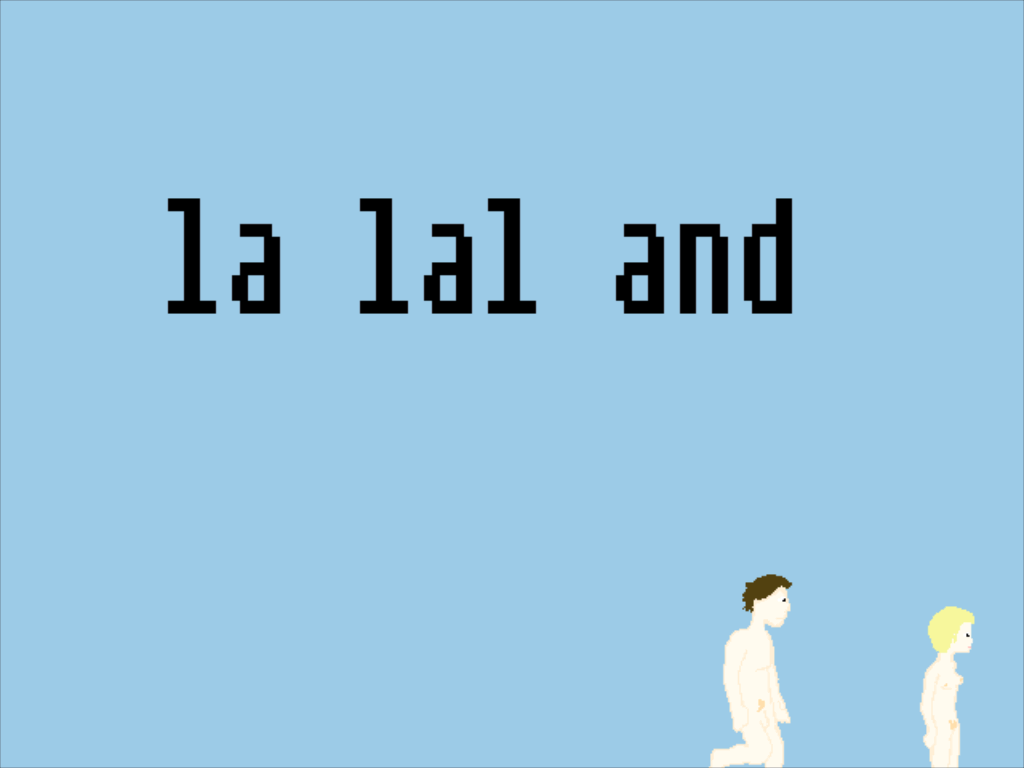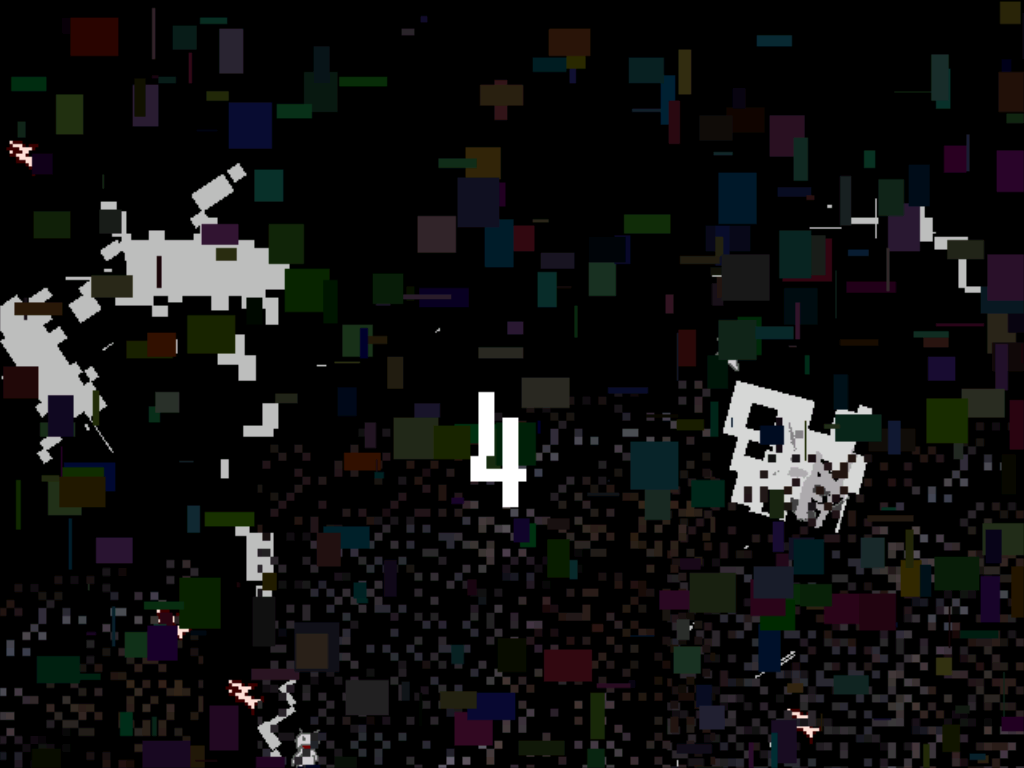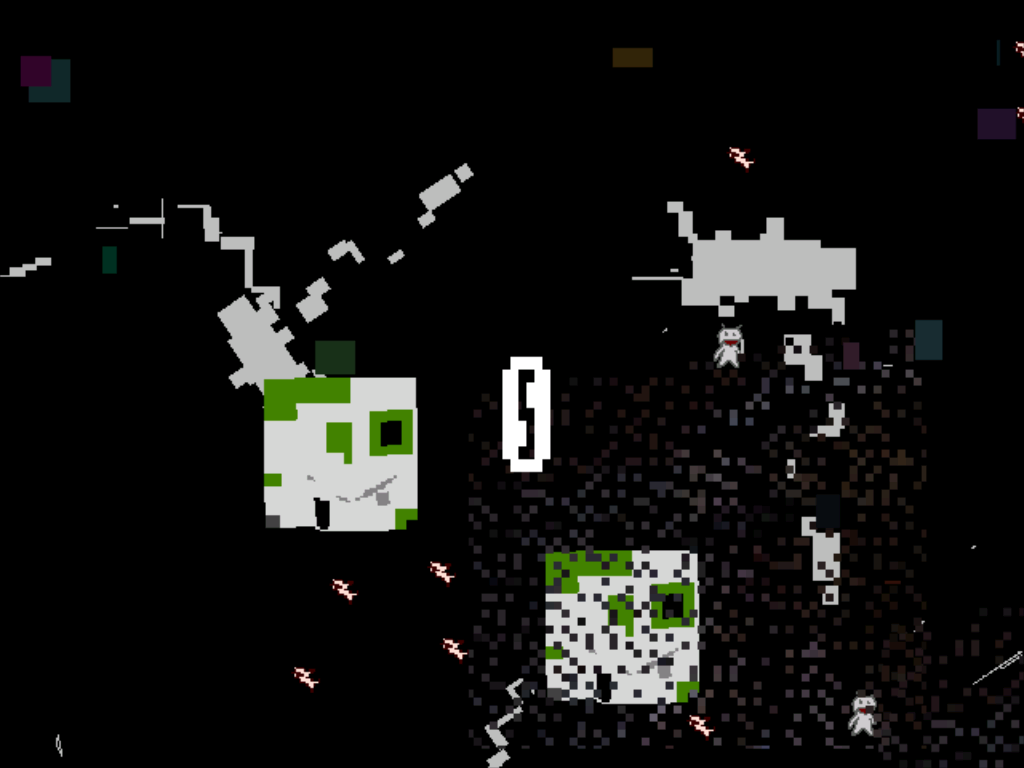Retro Replay Review
Gameplay
La La Land’s gameplay hinges on a minimalist, experimental approach that encourages players to shed preconceived notions of control and purpose. Rather than offering tutorials or explicit objectives, the game presents a series of abstract interactions—walking, jumping, and triggering environmental elements—that feel both familiar and disorienting. It’s this very tension between known mechanics and strange presentation that forms the core of the experience.
At its outset, the title places you in a stark landscape with two naked figures, a man and a woman, moving through a surreal setting. There are no HUD indicators, no quest logs—just the raw sensation of motion. Progression occurs almost organically, as you instinctively explore your surroundings, attempting to understand how you, as a player, relate to the world before you.
As the first section closes, the game shifts into an even more abstract realm: fragmented debris floats across the screen while a rhythmic chant underpins the atmosphere. Here, a simple numerical counter increases with each step or interaction, hinting at an unseen purpose. By combining these elements—motion, sound, and incremental progress—La La Land subverts traditional mechanics, rewarding curiosity and persistence over skill mastery.
While some may find the lack of clear direction challenging, the title’s brevity—completable in under an hour—ensures that experimentation rarely becomes tedious. Instead, players are encouraged to push past surface-level judgments, embracing the oddities the game deliberately throws your way. For those willing to dive into its layered abstractions, La La Land offers a refreshing departure from formulaic gameplay loops.
Graphics
Graphically, La La Land wears its “thrown-together” aesthetic on its sleeve, but this rough-hewn design is far from accidental. Sprites and textures appear scratched, smeared, and incomplete, creating a collage-like visual that underscores the game’s themes of broken narratives and hidden meanings. What might initially strike some as lazy or glitchy is actually a carefully crafted visual palette.
Throughout the various sections, debris and distortion effects layer over the environment, filtering your view and contributing to a sense of unease. In the first act, the stark bodies of the protagonists stand out against muted backgrounds, reinforcing vulnerability and mystery. Later, as chanting crescendos, shards of imagery swirl and obscure the terrain, challenging you to peer through the visual noise.
Color choices remain intentionally sparse—desaturated grays punctuated by sudden, jarring splashes of red or blue that feel almost accidental. This unpredictable use of hue complements the game’s message: to find meaning, you must look beyond the obvious. Even the camera behavior, occasionally jittery or shifting angles, plays into the experimental atmosphere, making every moment feel precarious and immediate.
For potential buyers, it’s important to recognize that La La Land’s graphics are not meant to showcase cutting-edge realism or polished animations. Instead, they serve as a narrative device, coaxing you toward introspection. If you’re seeking glossy visuals, this isn’t the game for you—but if you appreciate artful abstraction, its raw aesthetic is both memorable and thematically resonant.
Story
Beneath its cryptic surface, La La Land tells a hauntingly brief tale about identity, connection, and perception. The recurring character—a silent, almost archetypal figure—drifts through each scene with an air of melancholic detachment. Without dialogue or explicit exposition, you piece together fragments of a narrative that suggest yearning, loss, and the search for deeper truths.
In the initial segment, the naked man and woman evoke primal themes of intimacy and exposure. There’s a wordless tension in their paralysis, as if you’re witnessing the first moments of a complex relationship. Once this phase ends, the game thrusts you into a distorted world where chanting reinforces ritualistic undertones and the ever-increasing number poses questions about time, progress, or even suffering.
Despite its brevity, La La Land manages to hint at philosophical ideas without spelling them out. The debris obscuring your vision can be seen as emotional baggage, while the chanting score operates like a subconscious narrator—pushing, unsettling, and sometimes guiding you forward. Each section feels like a poem, deliberately sparse but charged with hidden significance.
For gamers who favor clear-cut storylines, this might feel unmoored. Yet for those drawn to ambiguity and willing to engage actively with the material, the narrative rewards reflection. By resisting conventional storytelling tropes, La La Land invites you to become a co-author of its meaning, piecing together moral and emotional fragments in your own mind.
Overall Experience
La La Land is not a casual romp; it’s an elegy in interactive form. Its short duration belies the depth it manages to convey through audio-visual abstraction and minimalist design. Players looking for a traditional adventure or action title will likely be left puzzled. However, those eager for experimental art games will find a distinctive gem that lingers in memory.
The game’s deliberate lack of polish and overt narrative is its greatest strength, fostering an atmosphere that challenges you rather than comforts you. You’re not shepherded along a clearly marked path—instead, you’re invited to forge your own. This approach can be polarizing, but it ensures that every moment feels earned and meaningful.
Sound design plays a pivotal role in the overall experience. The chanting, ambient drones, and sporadic, unintelligible murmurs wrap around the visuals, deepening the sense of otherworldliness. With minimalistic controls, it’s the interplay between what you see and hear that drives engagement, making the experience surprisingly immersive for a title with such a stripped-back presentation.
In conclusion, La La Land is a brief but potent experiment in interactive storytelling. It asks more of its players than it gives at first glance, demanding an open mind and a willingness to explore. If you’re intrigued by avant-garde game design and want to challenge your expectations, this haunting, enigmatic journey is well worth embarking upon.
 Retro Replay Retro Replay gaming reviews, news, emulation, geek stuff and more!
Retro Replay Retro Replay gaming reviews, news, emulation, geek stuff and more!








Reviews
There are no reviews yet.